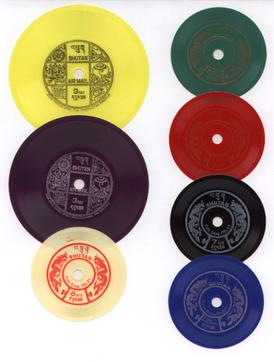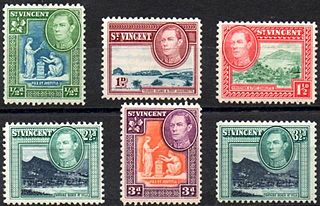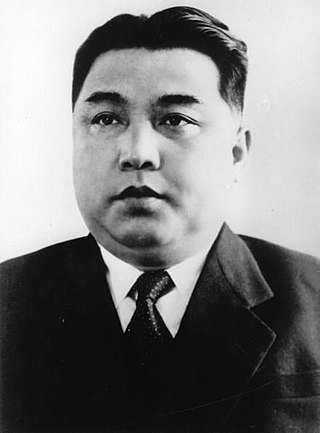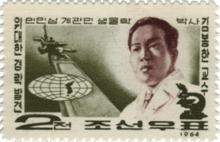
Philately is the study of postage stamps and postal history. It also refers to the collection and appreciation of stamps and other philatelic products. While closely associated with stamp collecting and the study of postage, it is possible to be a philatelist without owning any stamps. For instance, the stamps being studied may be very rare or reside only in museums.

Indian postal systems for efficient military and governmental communications had developed long before the arrival of Europeans. When the Portuguese, Dutch, French, Danish and British conquered the Marathas who had already defeated the Mughals, their postal systems existed alongside those of many somewhat independent states. The British East India Company gradually annexed the other powers on the sub-continent and brought into existence a British administrative system over most of modern-day India, with a need to establish and maintain both official and commercial mail systems.

"Aegukka", officially translated as "Patriotic Song", is the national anthem of the Democratic People's Republic of Korea, more commonly known as North Korea. It was composed in 1945 as a patriotic song celebrating independence from Japanese occupation and was adopted as the state anthem in 1947.

Postage stamps and postal history of Great Britain surveys postal history from the United Kingdom and the postage stamps issued by that country and its various historical territories until the present day.

A stamp catalog is a catalog of postage stamp types with descriptions and prices.

In philately, the term cover pertains to the outside of an envelope or package with an address, typically with postage stamps that have been cancelled and is a term generally used among stamp and postal history collectors. The term does not include the contents of the letter or package, although they may add interest to the item if still present. Cover collecting plays an important role in postal history as many covers bear stamps, postmarks and other markings along with names and addresses all of which help to place a cover at a given time and place in history.

The Canadian Postal Museum (CPM) was a museum once housed within the Canadian Museum of Civilization in Gatineau, Quebec. It was described by the Smithsonian Museum as being one of the five largest postal museums in the world, ranking second in annual attendance. The museum was not primarily about postage stamps, although it has a first-class collection that numbered in the tens of thousands. Rather, it presented the broader story of Canada's postal heritage, including the social and economic importance of postal communications throughout the country's history. It also explored international themes relating to postal communications.
Country definitives, formerly known as regional postage stamps of Great Britain, are the postage stamps issued for regions of the United Kingdom, reflecting the regional identity of the various countries and islands of the British isles.

The postal history of Malta began in the early modern period, when pre-adhesive mail was delivered to foreign destinations by privately owned ships for a fee. The earliest known letter from Malta, sent during the rule of the Order of St John, is dated 1532. The first formal postal service on the islands was established by the Order in 1708, with the post office being located at the Casa del Commun Tesoro in Valletta. The first postal markings on mail appeared later on in the 18th century.

The postage stamps and postal history of Israel is a survey of the postage stamps issued by the state of Israel, and its postal history, since independence was proclaimed on May 14, 1948. The first postage stamps were issued two days later on May 16, 1948. Pre-1948 postal history is discussed in postage stamps and postal history of Palestine.

The first postage stamps of Bhutan were issued in 1962, the same year that the first motorable road was opened. Before that there was a mail delivery system in place for official mail using mail runners, and between 1955 and 1962 revenue stamps were accepted as payment for internal mail. With the opening up of Bhutan in the early 1960s, a formal postal system was introduced.

Saint Vincent and the Grenadines, a former British colony in the Windward Islands, has produced stamps since 8 May 1861. The stamps featured either the British monarch’s head on them or the ER monogram and crown until around 1970. The stamps were printed with just "St. Vincent" until 1992 when the stamps began to print the full country name, "St. Vincent and the Grenadines".

Postage stamps and postal history of Singapore surveys postal history from Singapore and the postage stamps issued by that country and its various historical territories until the present day. Postal service in Singapore began with the delivery of stampless letters whose cost was borne by the receiving person, later encompassed pre-paid letters carried by private mail carriers and provisional post offices, and culminated in a system of universal prepayment that required all letters to bear nationally issued adhesive postage stamps. Singapore is an island country off maritime Southeast Asia, located between the Straits of Malacca and the South China Sea.

This is a survey of the postage stamps and postal history of Indonesia.

This is a survey of the postage stamps and postal history of the Netherlands.

This is a survey of the postage stamps and postal history of South Korea.

Cambodia–North Korea relations refers to the bilateral relationship between Cambodia and the DPRK. The DPRK has an embassy in Phnom Penh; Cambodia has an embassy in Pyongyang. The North Korean embassy is located on Sihanouk Boulevard, Phnom Penh, directly adjacent to the Prime Minister's residence.

The Pothong River is a river in North Korea. It flows through the capital Pyongyang and is a tributary of the Taedong River.

Kim Il Sung was the founder and first leader of North Korea. According to North Korean sources, the country awarded him "the title of Hero of the DPRK three times, the title of Labour Hero of the DPRK, 26 orders and 3 medals". In addition, foreign countries and organizations conferred upon him 74 orders and 152 medals.

The Korea Stamp Museum is a postal museum in the Central District of Pyongyang, North Korea.




















